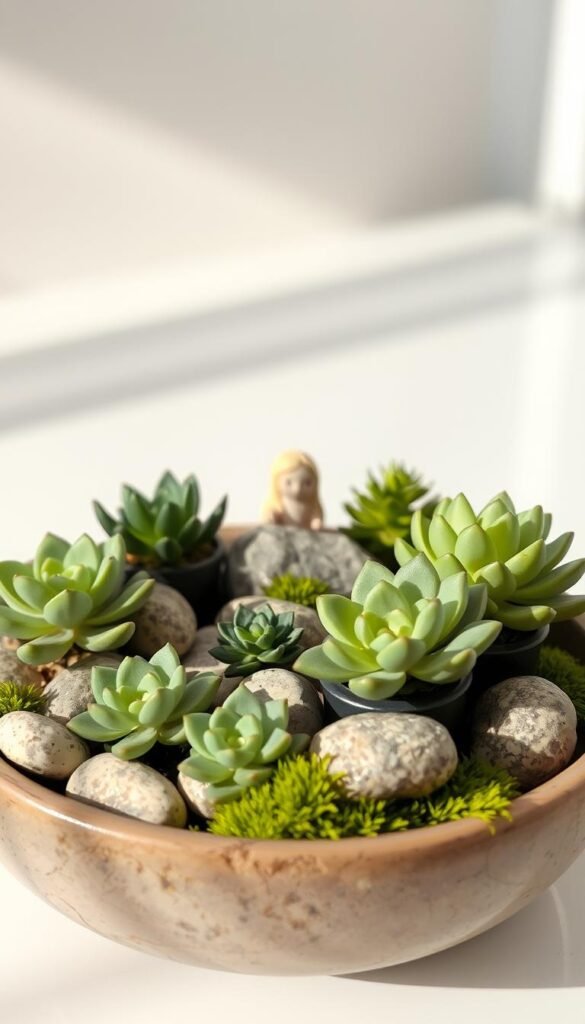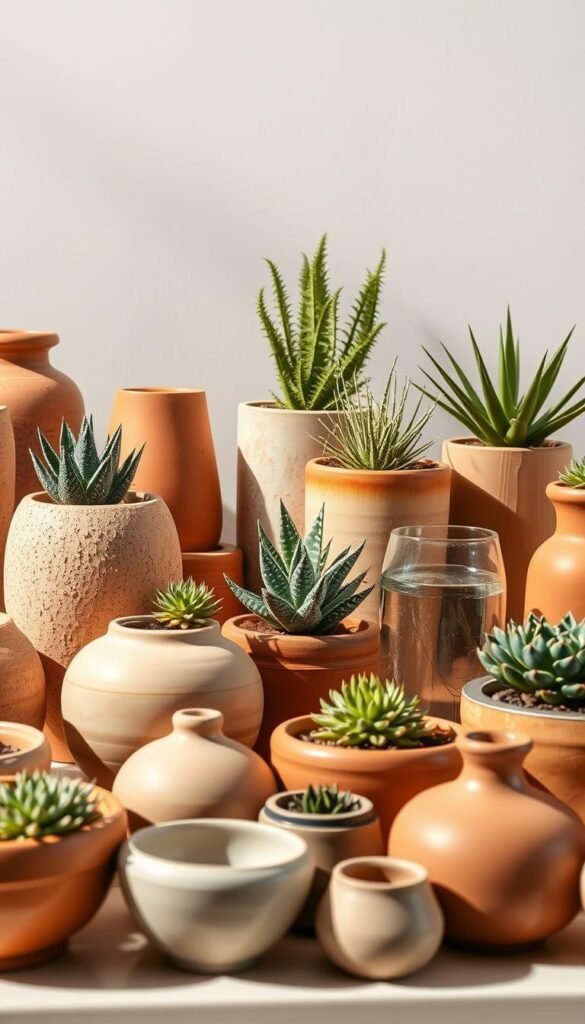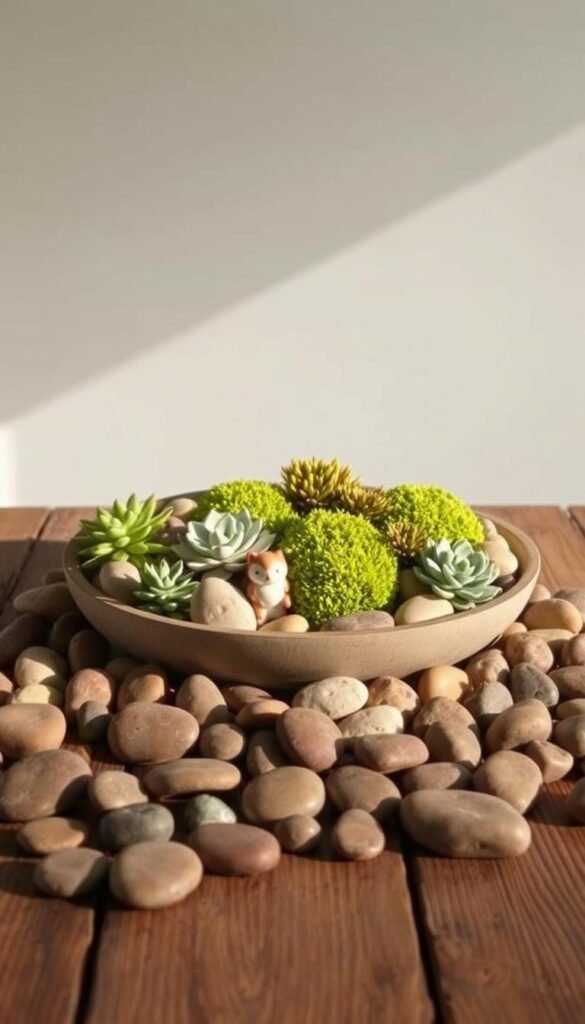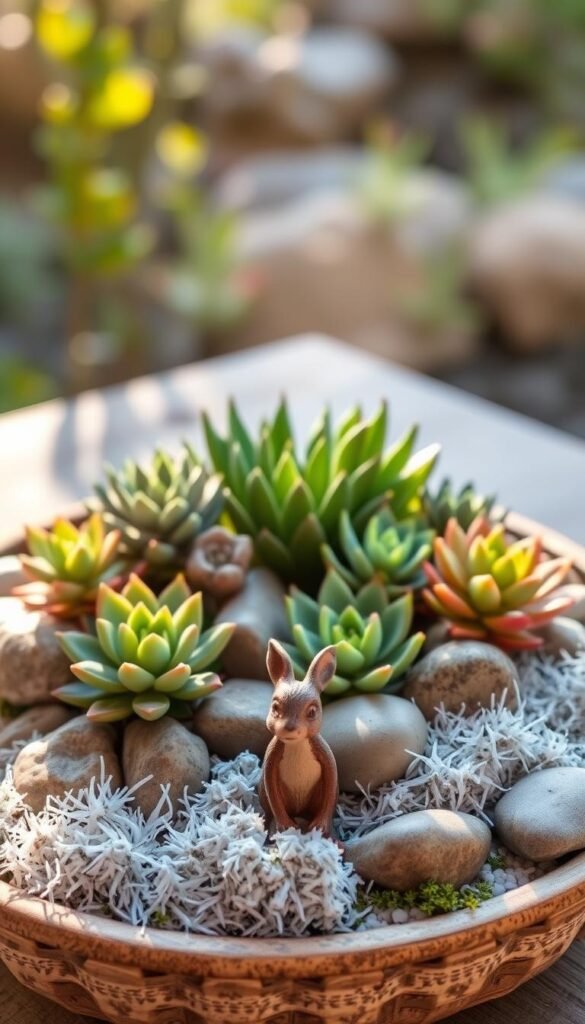Small-scale container gardens offer endless possibilities for bringing nature indoors. These artistic arrangements combine hardy plants with thoughtful design, letting you craft living art that fits on tabletops or shelves. Perfect for urban dwellers or anyone craving greenery without yard work, they turn limited spaces into vibrant focal points.
You’ll learn how shallow pots become canvases for creativity. From terracotta bowls to weathered wood planters, compact patio designs inspire fresh approaches to arranging textures and colors. Discover why enthusiasts love blending drought-resistant varieties with decorative stones for low-maintenance beauty.
This guide reveals secrets to balancing form and function. Proper soil mixtures and strategic layer placement ensure your creation thrives. We’ll explore how tiny figurines or natural elements add personality while complementing plant growth patterns.
Beyond aesthetics, these projects provide relaxation and connection to nature. Whether designing a desert-inspired scene or lush mossy retreat, you’ll find joy in curating every detail. Let’s transform simple materials into captivating displays that spark conversations and calm busy minds.
Understanding the Charm of Miniature Dish Gardens

Tiny living landscapes bring big creativity to tight spaces. These pint-sized ecosystems let you design entire worlds in containers no deeper than your palm. Whether placed on desks or windowsills, they turn ordinary areas into thriving natural scenes that spark joy.
Embracing the Art of Small-Scale Landscaping
Creating a miniature garden feels like painting with living materials. Every pebble becomes a boulder, while trailing plants mimic towering trees. This art form challenges you to think like a giant, arranging elements so they suggest vastness within inches.
The best designs tell stories through texture contrasts. Pair spiky greenery with smooth stones, or let flowering varieties peek through gravel paths. You’re not just growing plants – you’re building mood and movement in a space smaller than a dinner plate.
Benefits of Bringing Nature Indoors
Compact container gardens do more than beautify shelves. Studies show caring for living arrangements reduces stress by 40%. Their portable size means you can rotate designs seasonally or move them to catch sunlight.
These tiny ecosystems thrive in apartments and offices alike. They purify air while teaching patience through gentle maintenance. Plus, they’re perfect for sharing gardening passion without needing yard space – a living gift that keeps growing.
Choosing the Ideal Container, Soil, and Drainage

The foundation of every thriving miniature ecosystem begins with three key elements. Your vessel’s material and shape determine whether roots breathe or drown, while the earth beneath them needs careful balancing. Let’s break down how these choices shape your living artwork.
Selecting a Container with Character
Pick vessels that tell stories. Terracotta whispers rustic charm but needs sealing for indoor use – its porous nature can stain surfaces. Ceramic bowls offer bold colors but require drainage adjustments. For outdoor setups, weathered wood planters shine when lined with waterproof material.
Consider depth as much as style. A shallow container prevents overwatering succulents, while deeper pots suit trailing varieties. Match proportions to your plants’ mature size – cramped roots stifle growth faster than you’d expect.
Ensuring Proper Drainage and Soil Mix
Start with a gravel base. This layer stops soil from clogging drainage holes while letting excess water escape. Indoor setups skip holes but need sealed containers – a 1-inch pebble bed mimics natural runoff.
Mix gritty potting soil with perlite or sand. These additions prevent moisture retention that kills drought-loving plants. Test your blend: squeeze a handful – if it holds shape, add more grit. Your green friends will thank you with vigorous growth.
Accessorizing Your Succulent Dish Garden: Rocks, Mini Statues, and Moss

Transform your tiny landscape into a storytelling masterpiece. Strategic accents breathe life into compact spaces, turning basic arrangements into immersive worlds. Let’s explore how natural textures and curated elements create depth while supporting plant health.
Incorporating Rocks and Pebbles for Texture
Stone placement defines your dish garden’s personality. Flat pebbles become winding pathways, while stacked slate chips mimic canyon walls. Use jagged fragments near succulents to recreate desert cliffs, or smooth river stones around moisture-loving varieties.
Weathered wood pieces add organic contrast. Position them as fallen logs beside trailing plants to suggest ancient forests. Always rinse stones before placing – residual grit can alter soil chemistry over time.
Adding Mini Statues and Natural Details
Choose figurines no taller than your thumb. A tiny bench under leafy greens creates seating illusion without overshadowing growth. Metal accents rust in humid setups – opt for resin or ceramic decorations for lasting appeal.
Balance man-made elements with natural finds. Driftwood arches frame specific views, while seashell clusters suggest hidden ponds. Rotate features seasonally to refresh your scene’s narrative.
Using Moss for a Soft, Lush Finish
Sheet moss blankets bare soil beautifully, preventing erosion between waterings. Press fragments into gaps between stones for aged charm. Mist lightly – most varieties thrive in humidity without soggy roots.
Combine moss types for visual intrigue. Feathery strands soften container edges, while cushion moss mimics grassy knolls. This living layer evolves over time, deepening your garden’s authentic feel.
Planning Your Plant Selection for a Cohesive Landscape
Creating harmony in your living artwork starts with smart plant choices. The right mix ensures visual balance while keeping maintenance simple. Let’s explore how to build relationships between greenery that thrive together and delight the eye.
Matching Growth Needs and Aesthetics
Start by grouping plants with identical light and water needs. Pair slow-growing succulents like echeveria with air plants that share their drought tolerance. This prevents faster growers from hogging space or resources.
Play with textures using spiky haworthias beside round-leafed jade. Add trailing varieties like string-of-pearls to soften edges. These combinations create movement without overcrowding your dish garden.
Curating Color and Proportion
Limit your palette to three main hues for unity. Silvery senecio pairs beautifully with purple sedum and green sempervivum. Keep leaf sizes under 2 inches to maintain scale – oversized foliage breaks the miniature illusion.
Place taller specimens toward the back, medium-height types in the middle, and creepers up front. This layered approach adds depth while letting each plant shine. Your living collection stays manageable and photogenic for years.






